The appeal of Bridgestone’s finest sports bike was easy to understand as it accelerated out of a curve with the sun gleaming off its shapely chromed fuel tank, its two-stroke parallel-twin engine revving eagerly, and its high-pitched exhaust note providing an exhilarating soundtrack.
What made less sense was the knowledge that the 350 GTR was the high point of Bridgestone’s history as a motorcycle manufacturer. Shortly after it was built in 1967, the Japanese company not only ceased production of the GTR but abandoned motorcycle manufacture altogether, to concentrate on the tyres for which it remains a market leader.

If that decision seems surprising decades later, it must have been more so for those who had ridden the GTR back then and been impressed by its style, all-round performance, and generally high quality of design and construction.
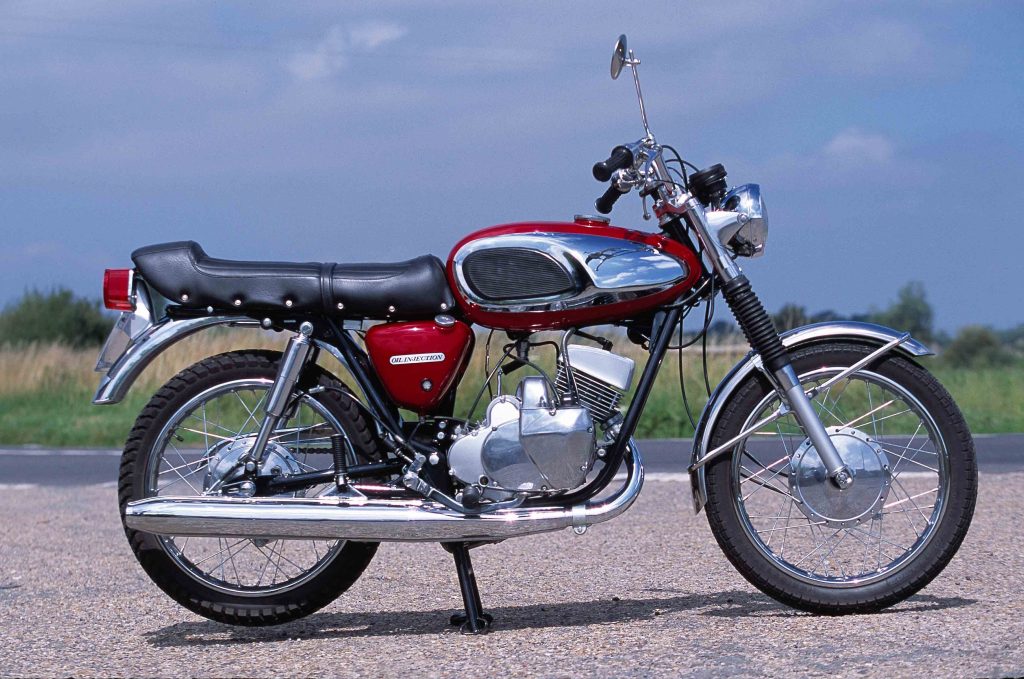
“We consider it to be one of the handsomest roadsters in all of motorcycling, with a superbly successful blending of Japanese smoothness and English cobbiness,” US magazine Cycle World enthused in its August 1967 review. “Further, it’s a full-size motorcycle, as big and as fast as any five-hundred – and considerably faster than most. The seating and control layout are exceptionally comfortable for the average or larger rider.”
The most notable aspect of the GTR’s 345cc powerplant was its rotary disc-valve induction system, which allowed much more precise control of gases than the more simple piston-ported design then used by rival two-stroke roadsters.
Ironically, Bridgestone’s Japanese rival Suzuki had considerable experience with disc-valve racing two-strokes, but the firm’s 250cc Super Six roadster, also a two-stroke twin, was piston ported. Suzuki’s knowledge dated back to 1961, when noted MZ factory racer and engineer Ernst Degner had defected from East Germany, bringing his team’s secrets with him.
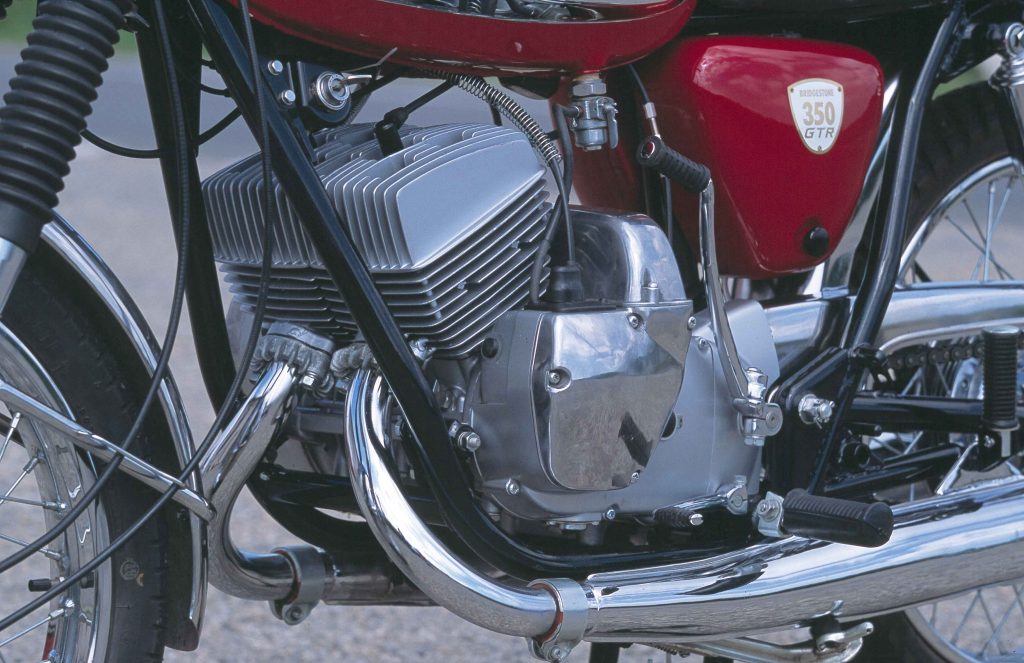
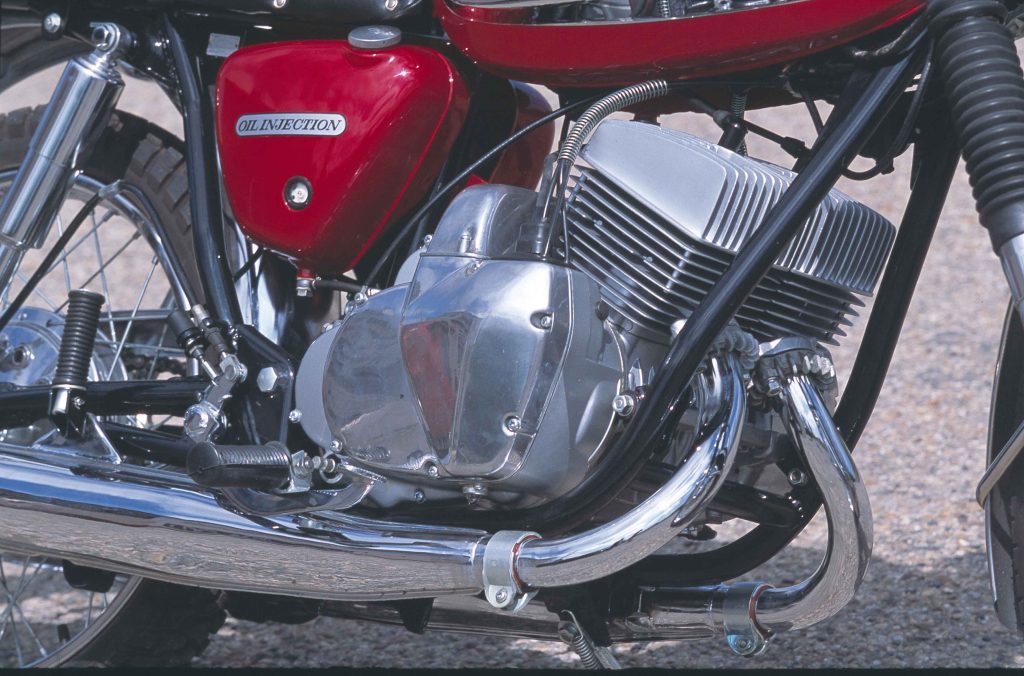
Bridgestone’s twin used a disc valve (one for each cylinder) on each end of its crankshaft, with a 26mm Mikuni carburettor bolted outside each valve. Another neat feature was the “piggy-back” alternator, situated above the engine rather than at the end of the crankshaft, which allowed the GTR unit to be quite slim despite its side-mounted carbs.
Peak output was normally claimed to be 37bhp at 7500rpm, although the figure of 40bhp was also quoted in places. (Most manufacturers were optimistic with power and speed claims, and Bridgestone seems to have played that game enthusiastically.)
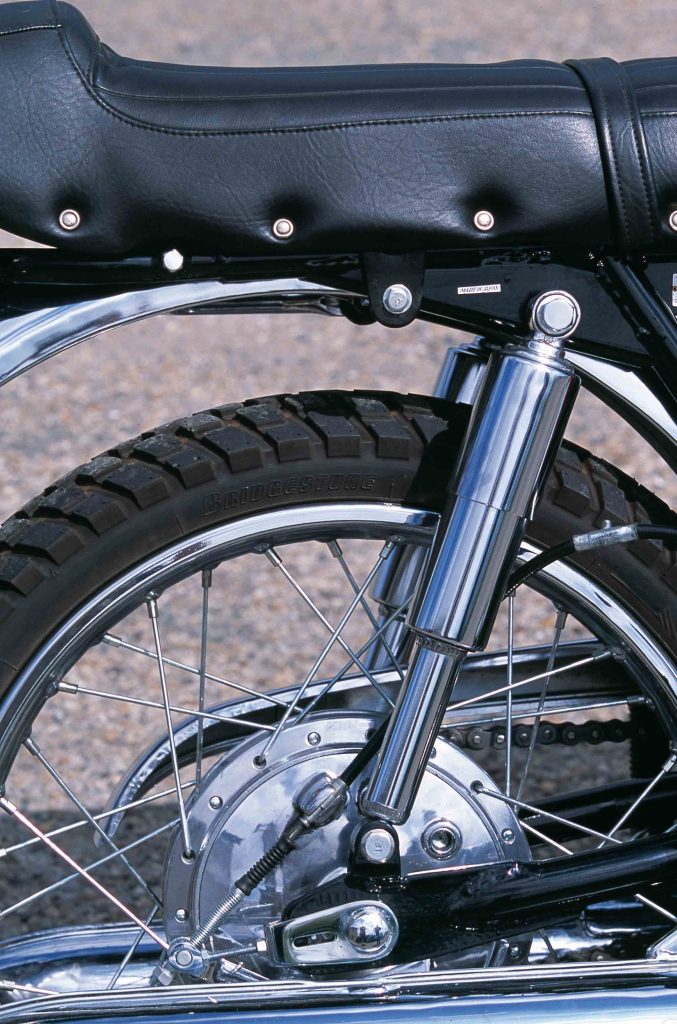
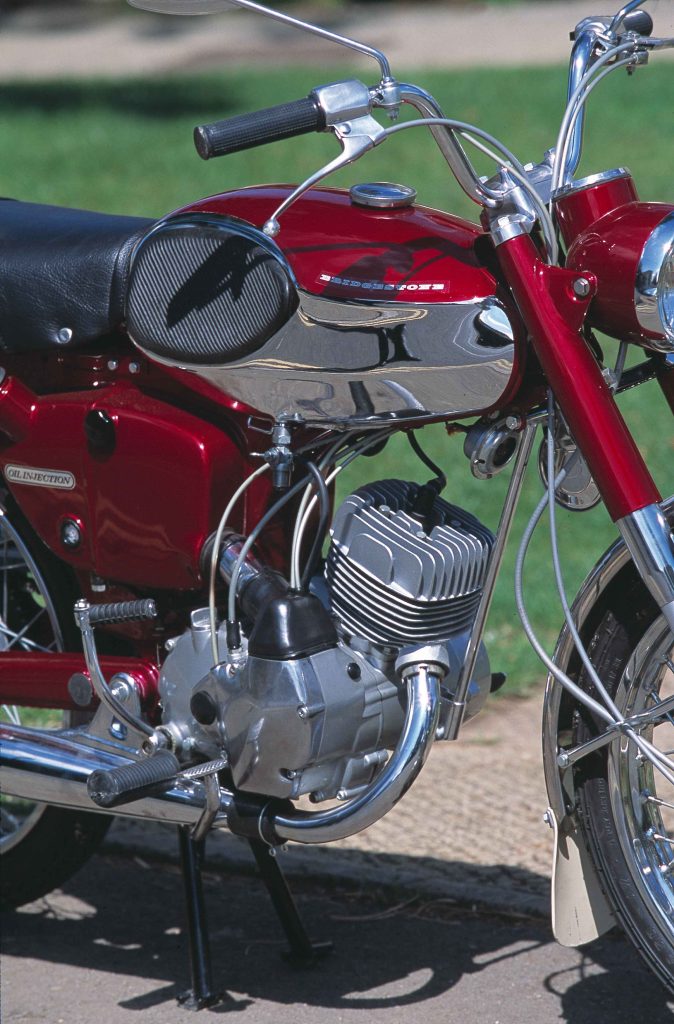
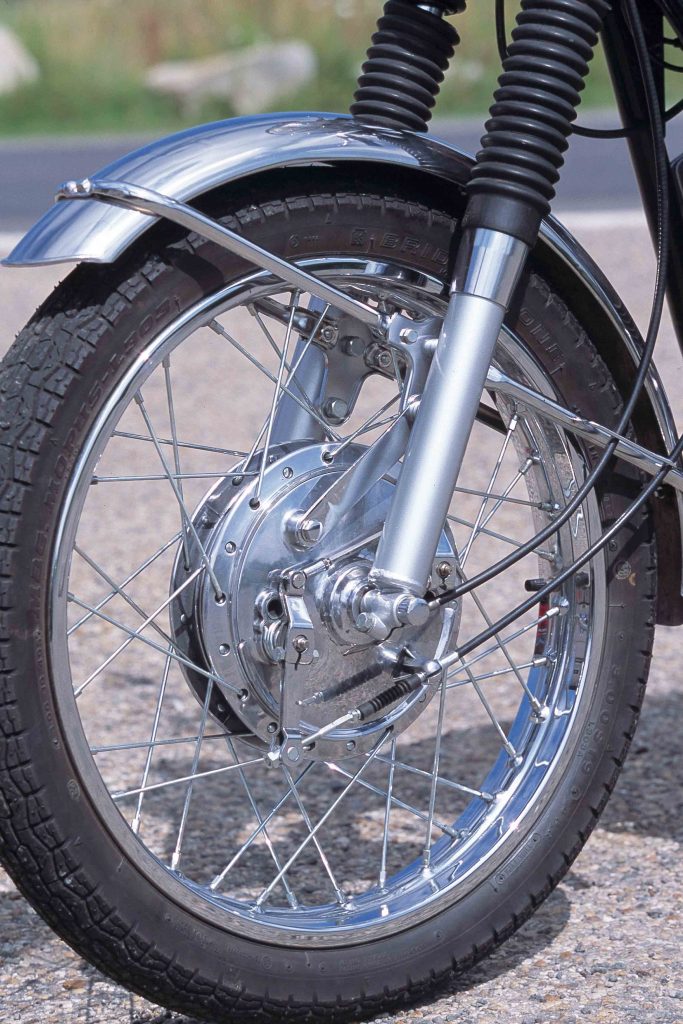
The GTR’s advanced engine features did not end with its induction. Lubrication was by a Yamaha-style pump-operated system, to which the Bridgestone added the refinement of inspection windows for both engine and gearbox oil. Similarly, the GTR impressed with its six-speed gearbox, and with its provision to swap the gear lever and rear brake pedals to give a left- or right-foot gear change, both of which were commonly used at the time.
But the Bridgestone also annoyed because its neutral was placed at the top of the six-speed gearbox, instead of between first and second as on most bikes. Similarly, although the GTR was unusual in allowing the rider the start the engine in any gear provided the clutch was pulled in, the kick-starter was inconveniently placed on the left of the bike. More thoughtful details included a stainless steel front mudguard and lubrication points on control cables.
The rest of the GTR was relatively conventional. Its twin-downtube steel frame, gaitered front forks, chromed twin shocks, and 19-inch wheels with drum brakes front and rear were very much standard fare when the GTR first hit the US market in 1966. Visually it was similar to its 90cc and 175cc siblings, and there were also models with off-road styling, notably the 350 GTO.
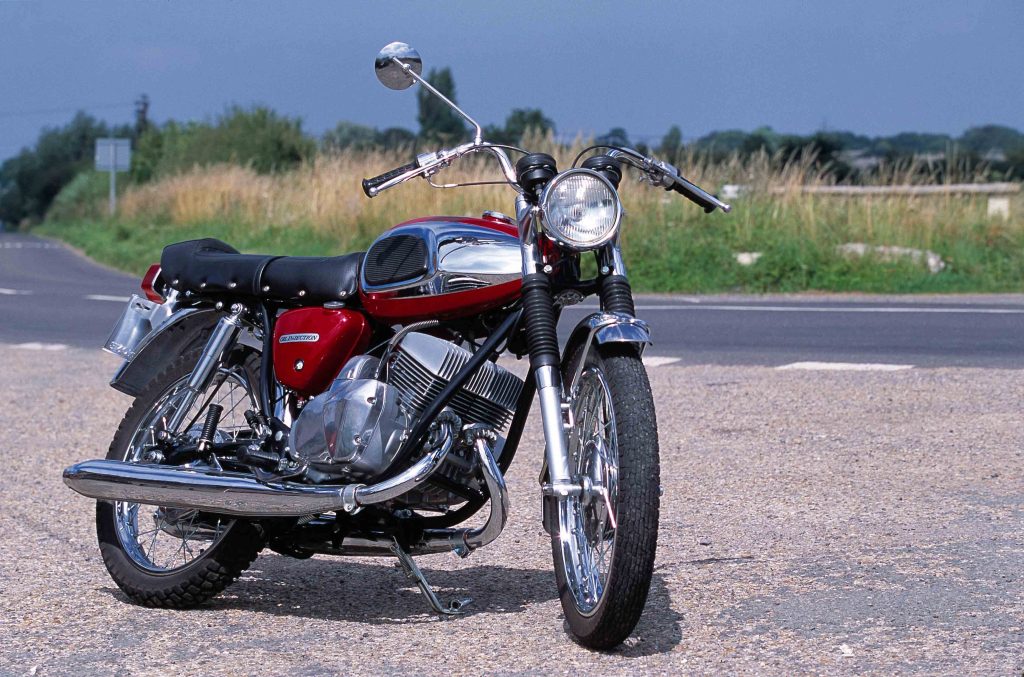
Few Bridgestones have survived in better condition than this one, which looked superb and felt light, slim, and quite tall as I stood alongside it before firing the motor into life with a gentle swing on the kickstarter. The disc-valve engine immediately settled to a reliable tickover and felt just as well sorted when I set off, though I was mildly disappointed that the dry clutch displayed none of the wheelie-provoking sharpness mentioned in some contemporary press coverage.
That unusual gearbox arrangement later caused a few hiccups, when I went to pull away and found myself in neutral. But generally the GTR was easy to ride, feeling pleasantly responsive through the rev range, with no evidence of the sharp two-stroke power step I’d expected.
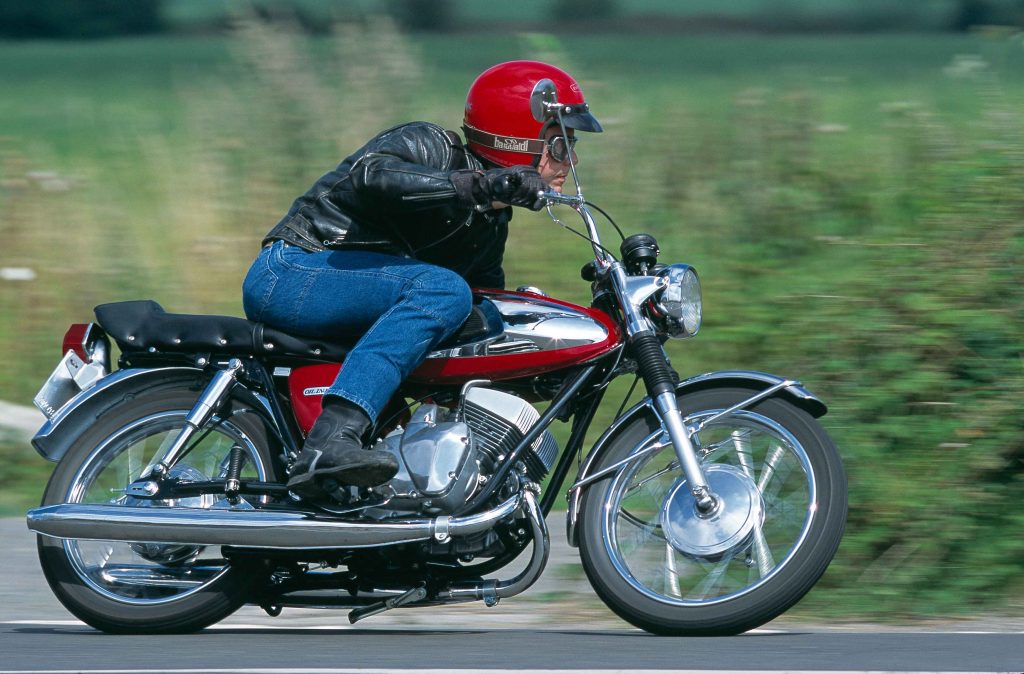
With 40bhp on tap even if you accept the higher of Bridgestone’s claimed figures for the GTR, the twin was hardly powerful by modern standards. But it was still lively enough to be fun, and to make me understand why the model impressed most people who rode one in the 1960s.
Back then, the Bridgestone’s revvy motor and light weight of just 161kg made the two-stroke a match for almost any bike away from the line, a particularly useful attribute in the US market. Bridgestone quoted a standing quarter-mile time of 13.7 seconds. Even though it wasn’t really as quick as that, the GTR provided plenty of acceleration away from the lights – and if the front wheel did come up occasionally to produce that ’60s rarity of a wheelie, I imagine most wide-eyed owners would have been delighted.
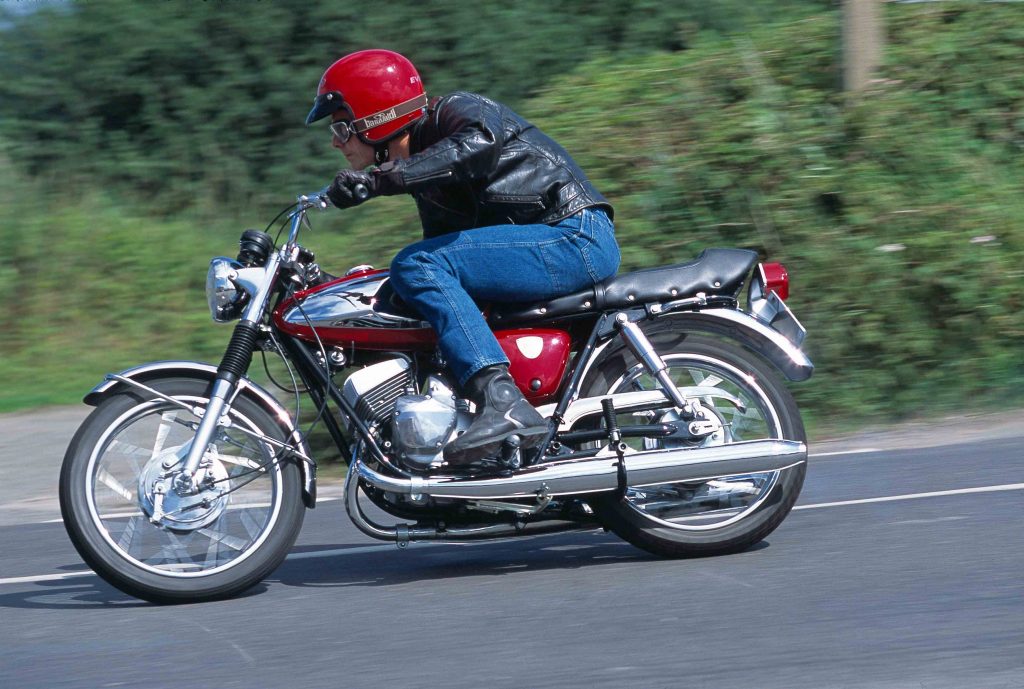
Top speed was about 95mph, rather than the 100–110mph quoted by some Bridgestone sources. More to the point, the GTR was happy to cruise at a steady 60mph or more, feeling smooth thanks to its rubber-mounted engine. Making the most of its performance meant sticking to fifth gear on the straights rather than using the overdrive sixth ratio, which cut speed unless the bike had the benefit of a hill or tail wind.
Inevitably, the upright riding position dictated by the Bridgestone’s fairly high and wide handlebars would soon have made high-speed riding tiring, though this was hardly a criticism in the days when fairings were rarely fitted as accessories, let alone as standard. On my ride the bike was comfortable enough, thanks to a fairly well-padded seat, plus suspension that was firm without being too stiff.
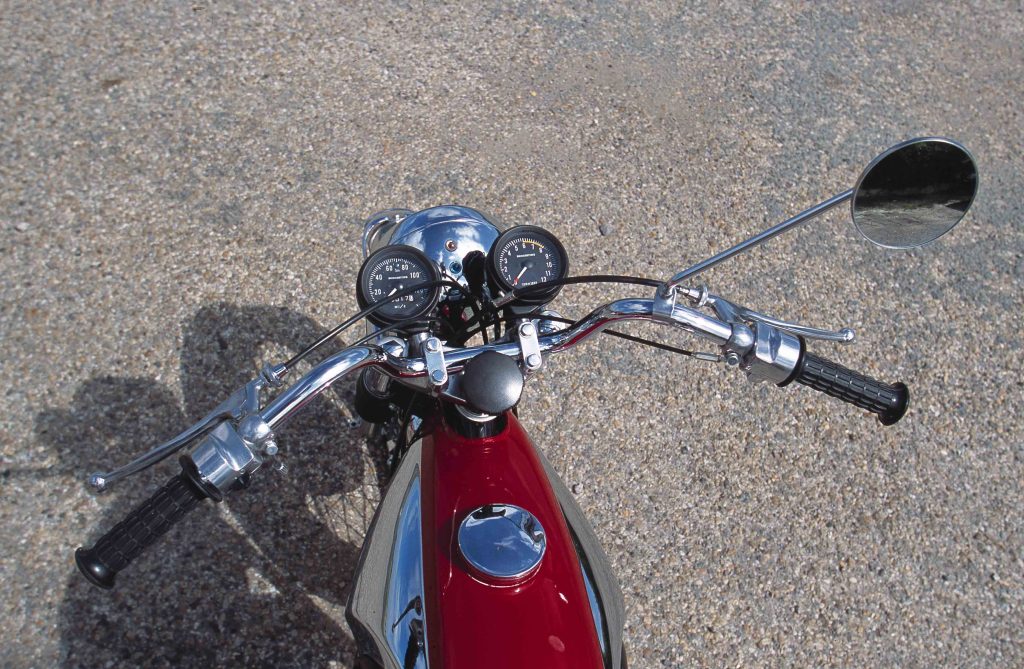
Handling was good by contemporary standards, thanks also to a twin-cradle steel frame that was rigid enough to prevent the head-shaking suffered by some rival two-strokes, notably Kawasaki’s notorious 500cc H1. Neither forks nor shock units had any adjustment, even for preload, but the shocks could be tuned by moving the top mounts, with the ride getting firmer with the units set vertically. This bike’s angled-forward units weren’t too far out for my 85kg.
Similarly, the GTR’s drum brakes worked quite well, with even the twin-leading-shoe front unit that was borrowed from the firm’s 175cc model providing reasonable stopping power. I also had no problem with the 350’s tyres, which appropriately enough were Bridgestones and gripped well despite their narrow size. (It probably would have been a different story in the wet.)
Unfortunately for Bridgestone, the GTR’s quality came at a high price, for the bike was more expensive than rival Japanese two-strokes, and it was competing directly with larger-engined four-strokes. In the UK, it cost more than BSA’s Thunderbolt 650 parallel twin, and only £30 less than a Triumph Bonneville. The GTR was good alright, but in most people’s minds it wasn’t that good.
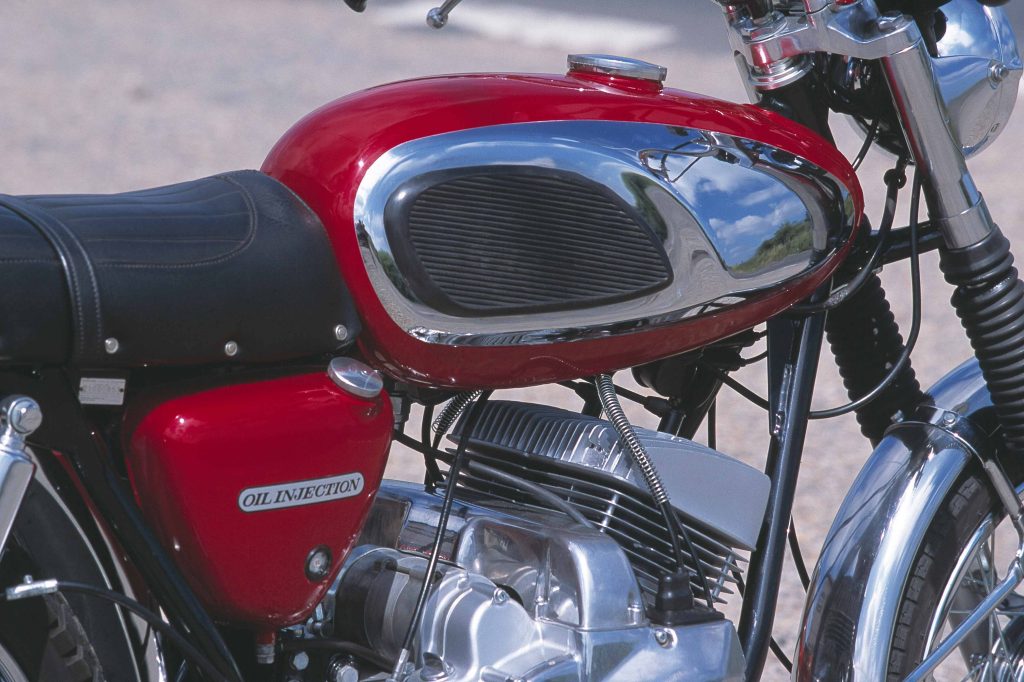
Some motorcyclists were also wary of the relatively little-known Japanese company, or dubious about a high-performance two-stroke’s reliability. This concern was not unreasonable, given the problems that early motors had with oil seals, and with broken air filter parts being sucked into the engine.
In the States, Bridgestone was not helped when Cycle World reported that the GTR press test bike, the first production model in the country, suffered problems with its cylinder bores after “more than 80 standing-start quarter-mile acceleration runs within a three-hour period”. Hastily air-freighted replacement barrels were not up to standard, so no performance figures could be obtained.
The magazine’s report was positive, even so. “There’s scarce reason to doubt that Bridgestone will be making their mark on the big bike market with their 350,” it concluded. “The motorcycle’s range of appeal is broad, offering something for the technically oriented mind, the style-conscious set, the [capacity-] class racer, and even the gent who wants nothing more than comfortable, dependable high-speed touring at a reasonable price.”
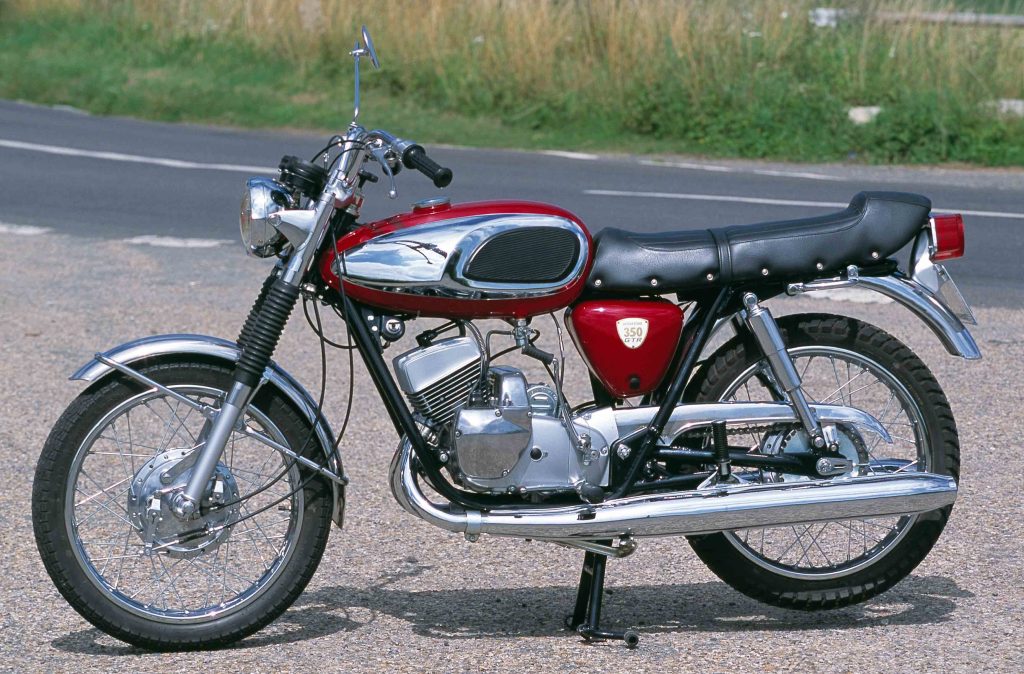
But Bridgestone never did make that mark on the market. The GTR sold slowly in the States in 1967, and in even smaller numbers in the UK following its release at the end of the year. By 1968, the firm was coming under pressure from the rival Japanese manufacturers, which were also customers for its tyres. Shortly afterward, Bridgestone abandoned motorcycle production to concentrate on its primary product. The GTR soon faded from the scene, though it left a lasting impression with many who had ridden one.
Given Bridgestone’s enduring success in the tyre world, it’s hard to argue with that decision to quit motorcycle production. But after riding the stylish, quick, and classy 350 GTR, it’s natural to wonder just how good modern Bridgestone bikes would be if the firm had continued making them all this time.
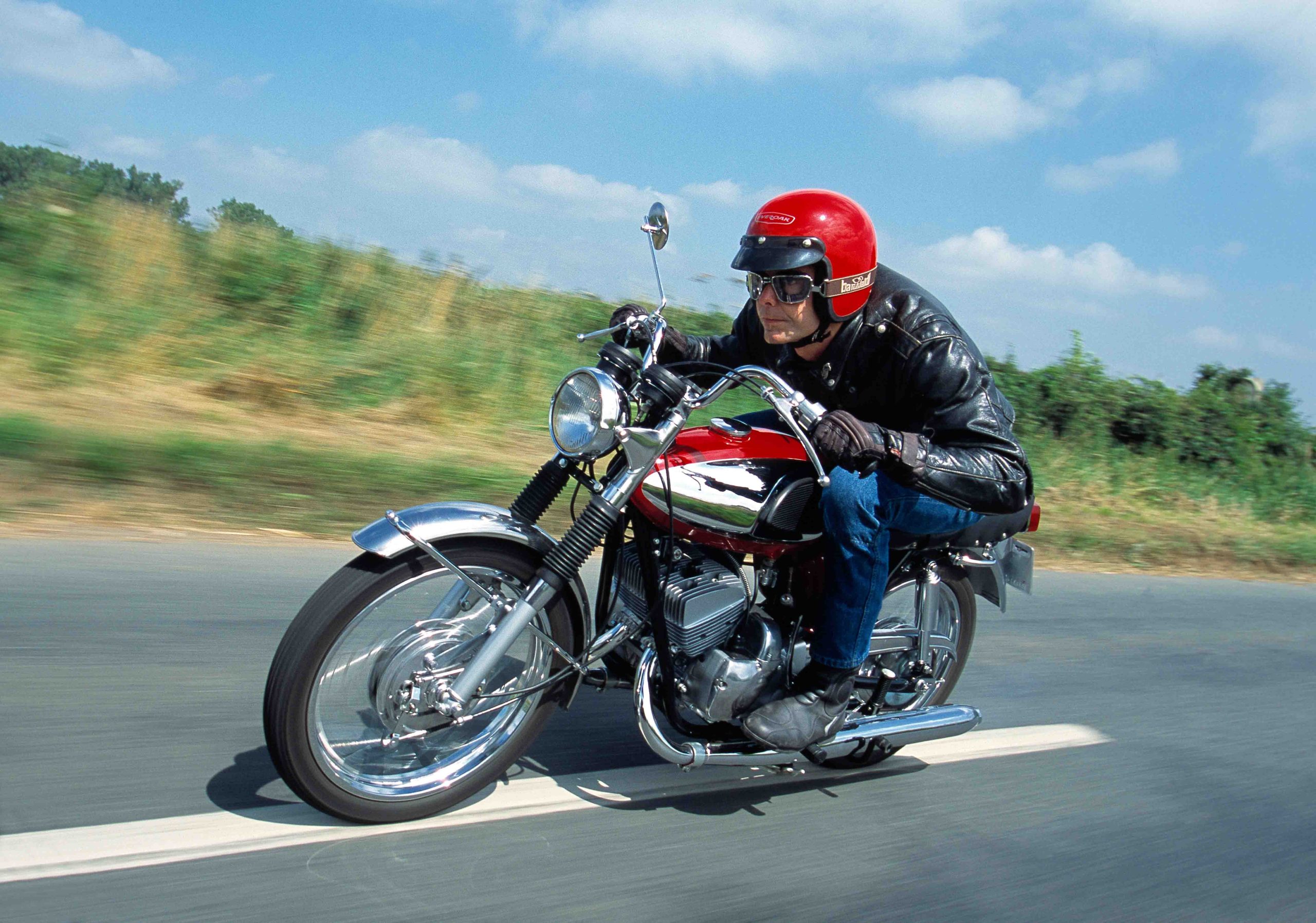

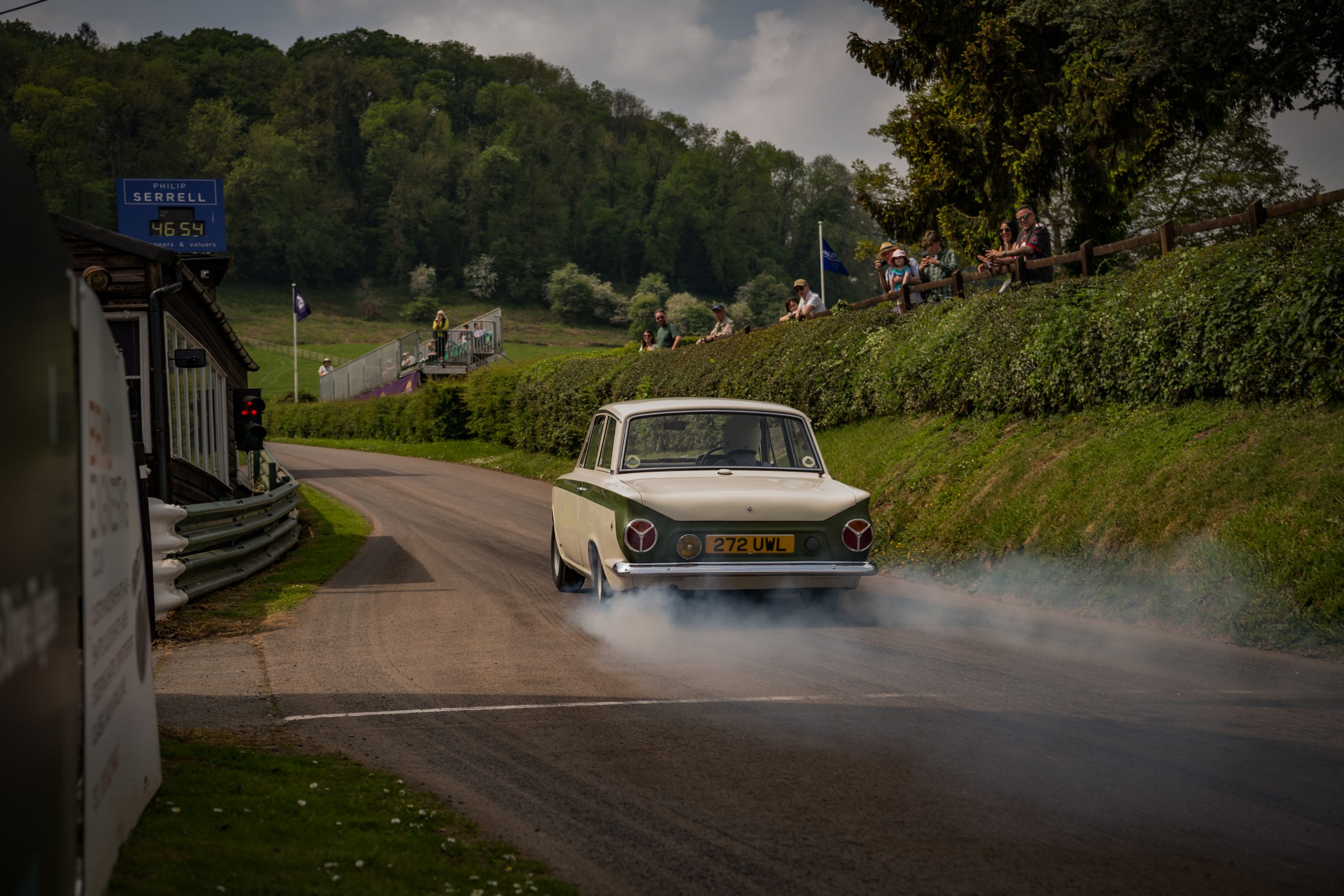
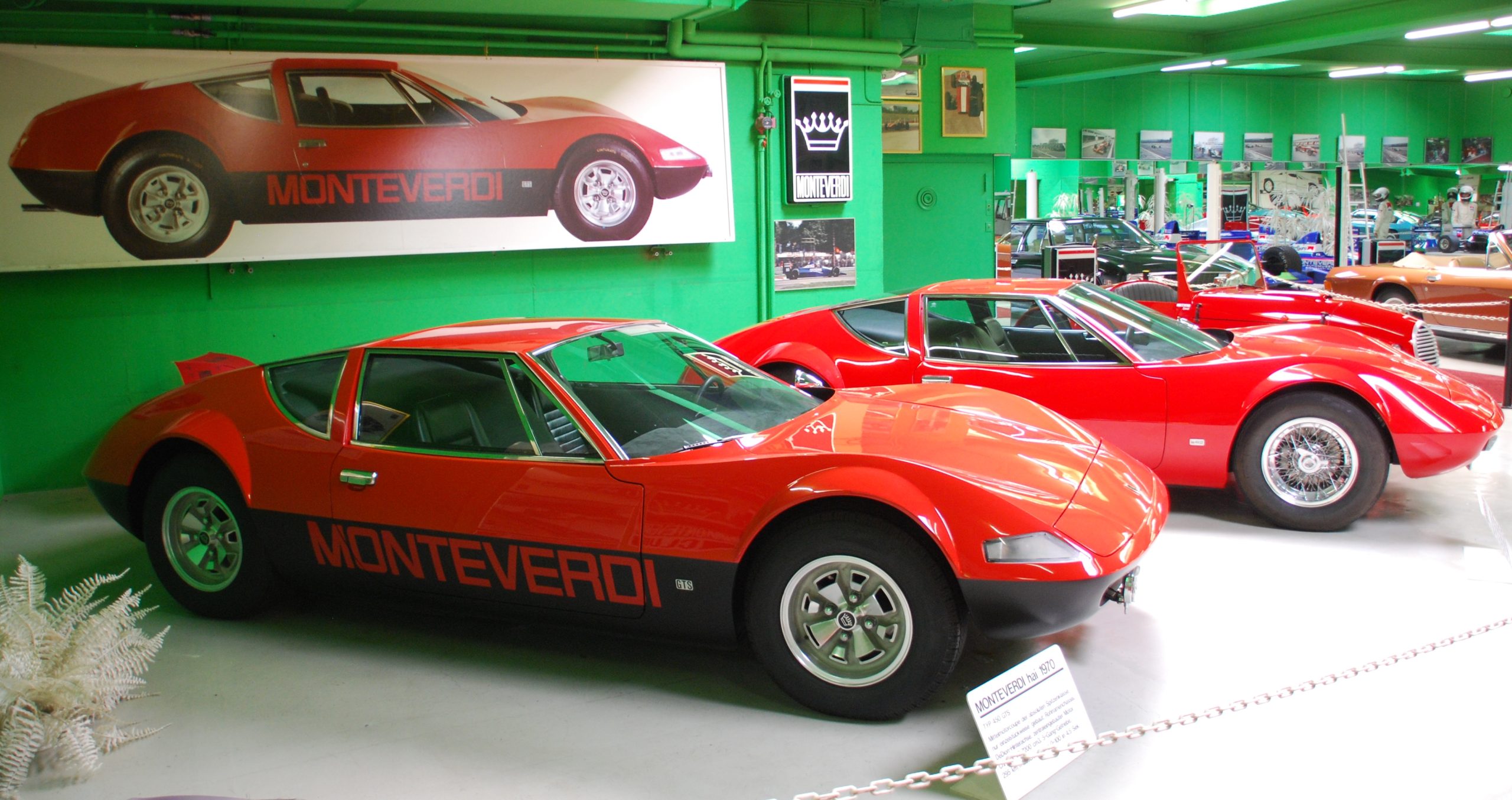
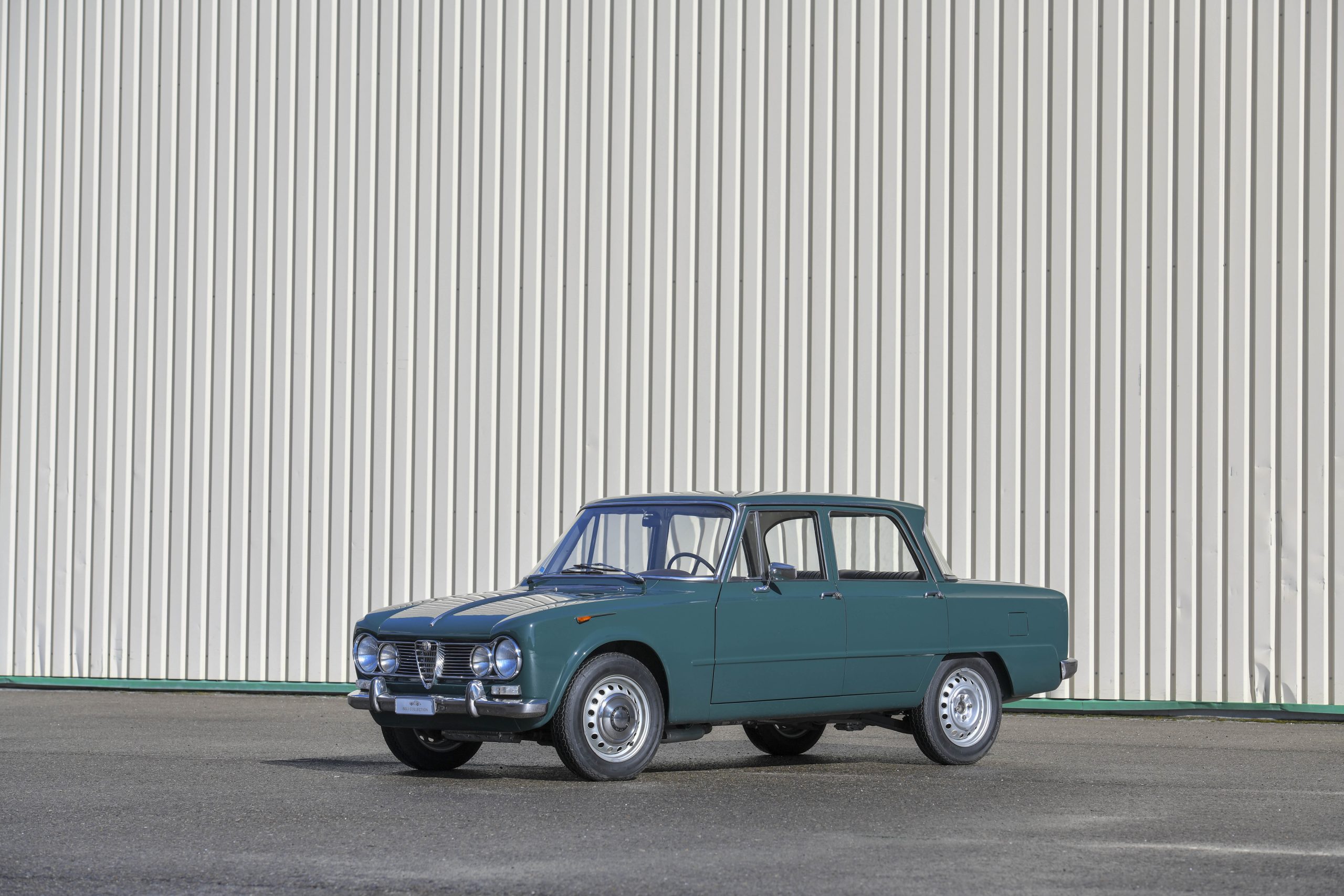
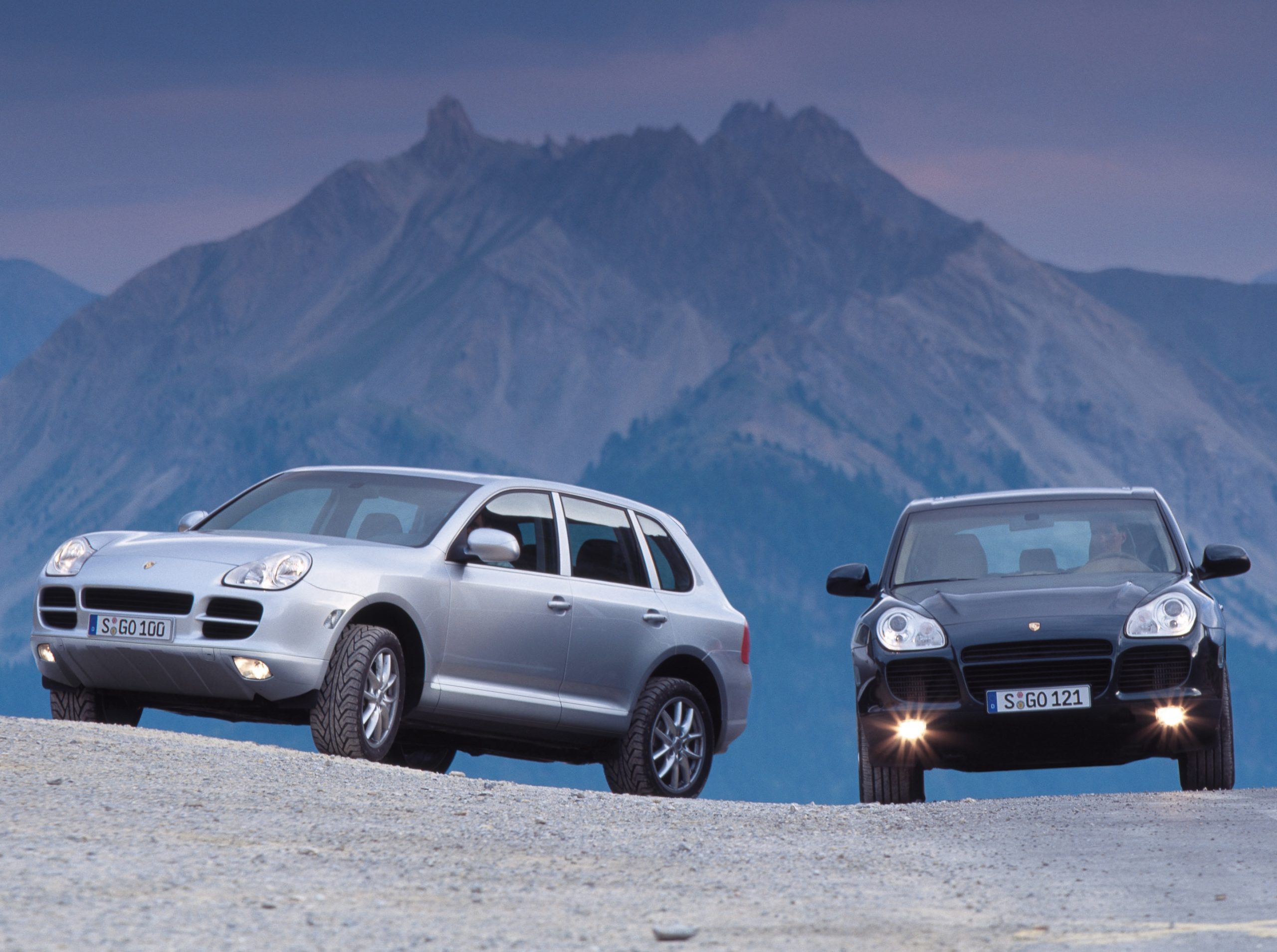
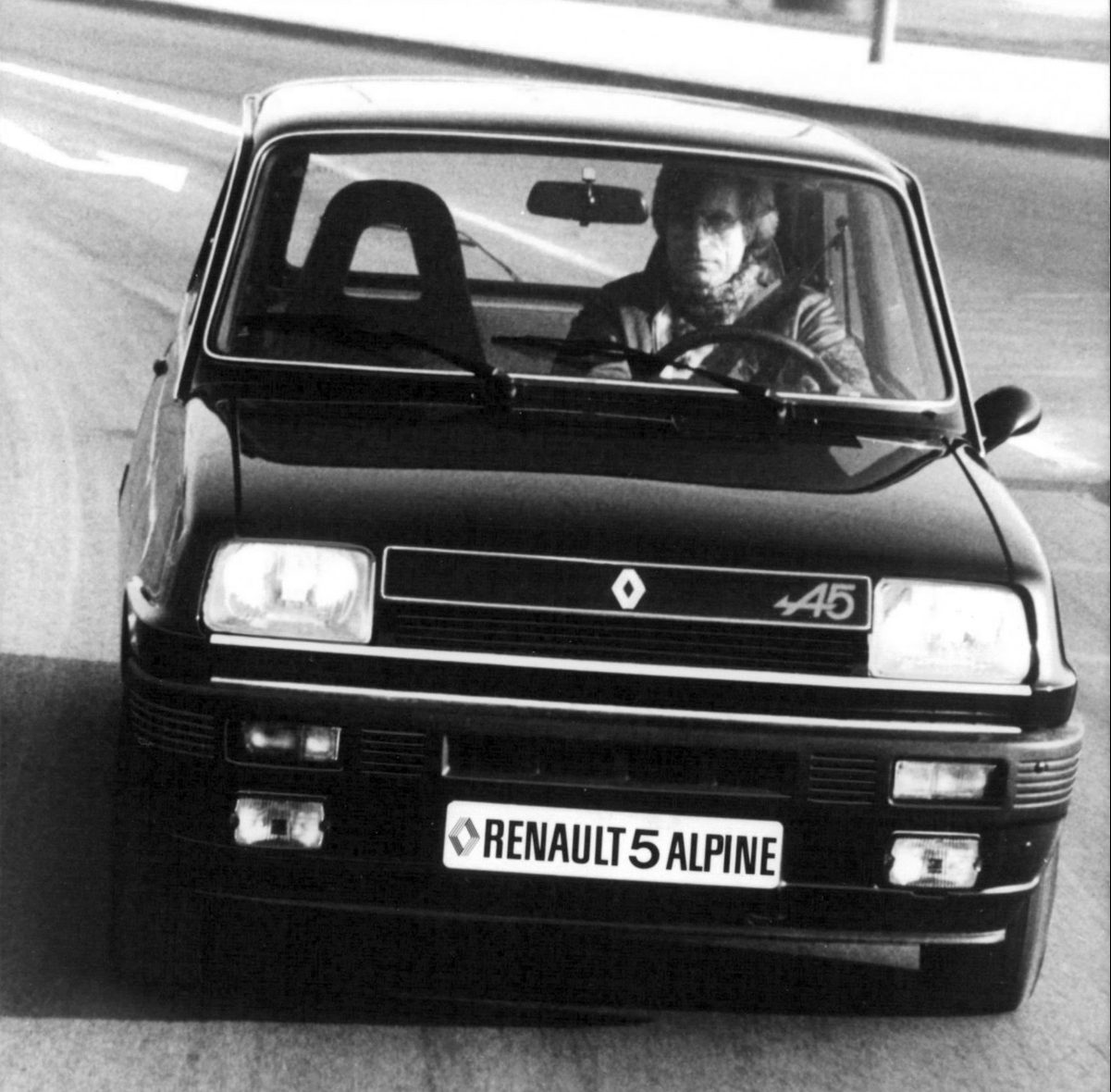
They wouldn’t have continued. Kawasaki, Yamaha and Suzuki would have trashed them.
I’m a fan of Bridgestone bikes and have two GTRs. It’s a well made, comfortable quick bike…with good torque and ride manners. I also have a Kawi A7 Avenger, and the two bikes are actually pretty similar in design and performance (both being rotary valve). Comfort wise, the BS GTR may have an edge, largely owing to it’s taller stance and relaxed leg position. The six speed tranny (like Suzuki’s T20 Hustler) is novel. Make no mistake. These were great bikes for their time, and gave Suzuki, Yamaha and Kawasaki a run for their two-stroke money. And they had better performance than Honda’s CL77s and later CL350, though probably not as good as Honda-san’s CB450 DOHC offering — their largest displacement bike before their Dream CB750.